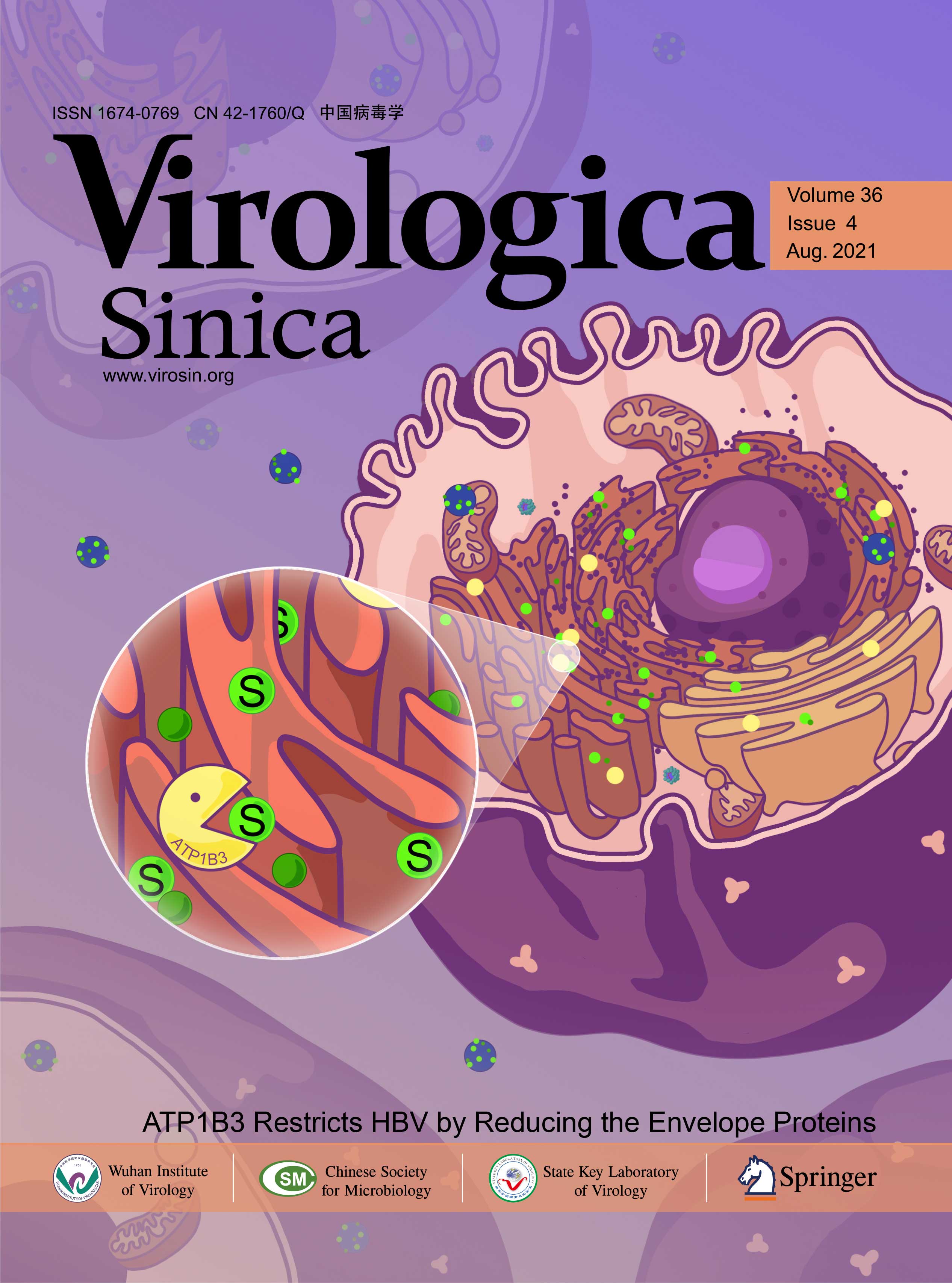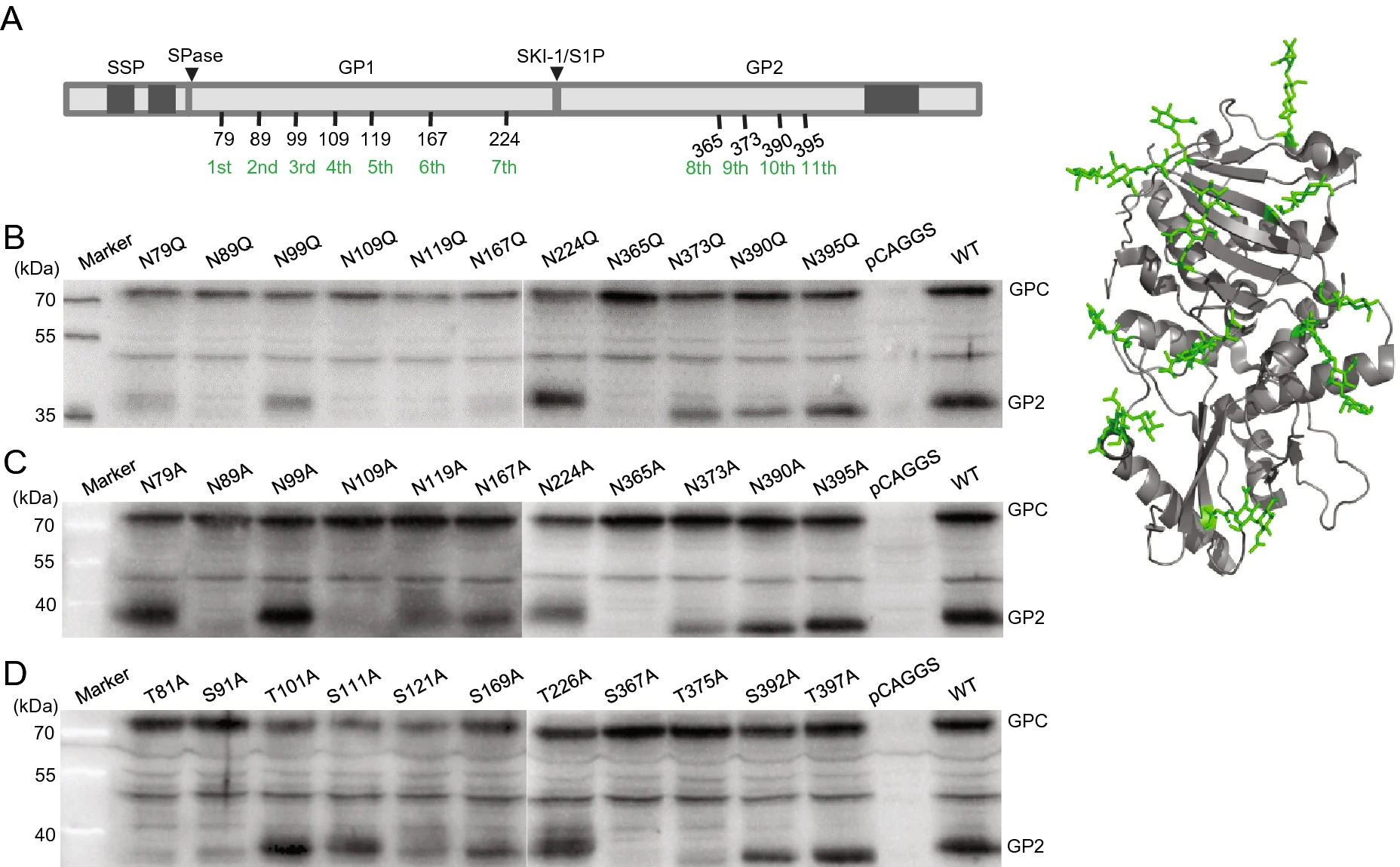-
Abraham J, Corbett KD, Farzan M, Choe H, Harrison SC (2010) Structural basis for receptor recognition by New World hemorrhagic fever arenaviruses. Nat Struct Mol Biol 17: 438-444
doi: 10.1038/nsmb.1772
-
Baize S, Marianneau P, Loth P, Reynard S, Journeaux A, Chevallier M, Tordo N, Deubel V, Contamin H (2009) Early and strong immune responses are associated with control of viral replication and recovery in lassa virus-infected cynomolgus monkeys. J Virol 83: 5890-5903
doi: 10.1128/JVI.01948-08
-
Bonhomme CJ, Capul AA, Lauron EJ, Bederka LH, Knopp KA, Buchmeier MJ (2011) Glycosylation modulates arenavirus glycoprotein expression and function. Virology 409: 223-233
doi: 10.1016/j.virol.2010.10.011
-
Bonhomme CJ, Knopp KA, Bederka LH, Angelini MM, Buchmeier MJ (2013) LCMV glycosylation modulates viral fitness and cell tropism. PLoS ONE 8: e53273
doi: 10.1371/journal.pone.0053273
-
Botten J, Alexander J, Pasquetto V, Sidney J, Barrowman P, Ting J, Peters B, Southwood S, Stewart B, Rodriguez-Carreno MP, Mothe B, Whitton JL, Sette A, Buchmeier MJ (2006) Identification of protective Lassa virus epitopes that are restricted by HLA-A2. J Virol 80: 8351-8361
doi: 10.1128/JVI.00896-06
-
Bowden TA, Crispin M, Graham SC, Harvey DJ, Grimes JM, Jones EY, Stuart DI (2009) Unusual molecular architecture of the machupo virus attachment glycoprotein. J Virol 83: 8259-8265
doi: 10.1128/JVI.00761-09
-
Cohen-Dvashi H, Cohen N, Israeli H, Diskin R (2015) Molecular mechanism for LAMP1 recognition by Lassa virus. J Virol 89: 7584-7592
doi: 10.1128/JVI.00651-15
-
Eichler R, Lenz O, Garten W, Strecker T (2006) The role of single N-glycans in proteolytic processing and cell surface transport of the Lassa virus glycoprotein GP-C. Virol J 3: 41
doi: 10.1186/1743-422X-3-41
-
Fisher-Hoch SP, Hutwagner L, Brown B, McCormick JB (2000) Effective vaccine for lassa fever. J Virol 74: 6777-6783
doi: 10.1128/JVI.74.15.6777-6783.2000
-
Geisbert TW, Jones S, Fritz EA, Shurtleff AC, Geisbert JB, Liebscher R, Grolla A, Stroher U, Fernando L, Daddario KM, Guttieri MC, Mothe BR, Larsen T, Hensley LE, Jahrling PB, Feldmann H (2005) Development of a new vaccine for the prevention of Lassa fever. PLoS Med 2: e183
doi: 10.1371/journal.pmed.0020183
-
Gunther S, Emmerich P, Laue T, Kuhle O, Asper M, Jung A, Grewing T, ter Meulen J, Schmitz H (2000) Imported lassa fever in Germany: molecular characterization of a new Lassa virus strain. Emerg Infect Dis 6: 466-476
doi: 10.3201/eid0605.000504
-
Hastie KM, Zandonatti MA, Kleinfelter LM, Heinrich ML, Rowland MM, Chandran K, Branco LM, Robinson JE, Garry RF, Saphire EO (2017) Structural basis for antibody-mediated neutralization of Lassa virus. Science 356: 923-928
doi: 10.1126/science.aam7260
-
Hastie KM, Cross RW, Harkins SS, Zandonatti MA, Koval AP, Heinrich ML, Rowland MM, Robinson JE, Geisbert TW, Garry RF, Branco LM, Saphire EO (2019) Convergent structures illuminate features for Germline antibody binding and pan-Lassa virus neutralization. Cell 178: e1014
-
Houlihan C, Behrens R (2017) Lassa fever. BMJ 358: j2986
-
Ibukun FI (2020) Inter-lineage variation of Lassa virus glycoprotein epitopes: a challenge to Lassa virus vaccine development. Viruses 12: 386
doi: 10.3390/v12040386
-
Johnson KM, McCormick JB, Webb PA, Smith ES, Elliott LH, King IJ (1987) Clinical virology of Lassa fever in hospitalized patients. J Infect Dis 155: 456-464
doi: 10.1093/infdis/155.3.456
-
McCormick JB, King IJ, Webb PA, Scribner CL, Craven RB, Johnson KM, Elliott LH, Belmont-Williams R (1986) Lassa fever. Effective therapy with ribavirin. N Engl J Med 314: 20-26
-
Mire CE, Cross RW, Geisbert JB, Borisevich V, Agans KN, Deer DJ, Heinrich ML, Rowland MM, Goba A, Momoh M, Boisen ML, Grant DS, Fullah M, Khan SH, Fenton KA, Robinson JE, Branco LM, Garry RF, Geisbert TW (2017) Human-monoclonal-antibody therapy protects nonhuman primates against advanced Lassa fever. Nat Med 23: 1146-1149
doi: 10.1038/nm.4396
-
Robinson JE, Hastie KM, Cross RW, Yenni RE, Elliott DH, Rouelle JA, Kannadka CB, Smira AA, Garry CE, Bradley BT, Yu H, Shaffer JG, Boisen ML, Hartnett JN, Zandonatti MA, Rowland MM, Heinrich ML, Martinez-Sobrido L, Cheng B, de la Torre JC, Andersen KG, Goba A, Momoh M, Fullah M, Gbakie M, Kanneh L, Koroma VJ, Fonnie R, Jalloh SC, Kargbo B, Vandi MA, Gbetuwa M, Ikponmwosa O, Asogun DA, Okokhere PO, Follarin OA, Schieffelin JS, Pitts KR, Geisbert JB, Kulakoski PC, Wilson RB, Happi CT, Sabeti PC, Gevao SM, Khan SH, Grant DS, Geisbert TW, Saphire EO, Branco LM, Garry RF (2016) Most neutralizing human monoclonal antibodies target novel epitopes requiring both Lassa virus glycoprotein subunits. Nat Commun 7: 11544
doi: 10.1038/ncomms11544
-
Sommerstein R, Flatz L, Remy MM, Malinge P, Magistrelli G, Fischer N, Sahin M, Bergthaler A, Igonet S, Ter Meulen J, Rigo D, Meda P, Rabah N, Coutard B, Bowden TA, Lambert PH, Siegrist CA, Pinschewer DD (2015) Arenavirus glycan shield promotes neutralizing antibody evasion and protracted infection. PLoS Pathog 11: e1005276
doi: 10.1371/journal.ppat.1005276
-
ter Meulen J, Badusche M, Kuhnt K, Doetze A, Satoguina J, Marti T, Loeliger C, Koulemou K, Koivogui L, Schmitz H, Fleischer B, Hoerauf A (2000) Characterization of human CD4(+) T-cell clones recognizing conserved and variable epitopes of the Lassa virus nucleoprotein. J Virol 74: 2186-2192
doi: 10.1128/JVI.74.5.2186-2192.2000
-
ter Meulen J, Badusche M, Satoguina J, Strecker T, Lenz O, Loeliger C, Sakho M, Koulemou K, Koivogui L, Hoerauf A (2004) Old and New World arenaviruses share a highly conserved epitope in the fusion domain of the glycoprotein 2, which is recognized by Lassa virus-specific human CD4+ T-cell clones. Virology 321: 134-143
doi: 10.1016/j.virol.2003.12.013
-
Vita R, Mahajan S, Overton JA, Dhanda SK, Martini S, Cantrell JR, Wheeler DK, Sette A, Peters B (2019) The immune epitope database (IEDB): 2018 update. Nucl Acids Res 47: D339-D343
doi: 10.1093/nar/gky1006
-
Wang P, Liu Y, Zhang G, Wang S, Guo J, Cao J, Jia X, Zhang L, Xiao G, Wang W (2018) Screening and identification of Lassa virus entry inhibitors from an FDA-approved drugs library. J Virol 92: e00954-e1918
-
Warner BM, Safronetz D, Stein DR (2018) Current research for a vaccine against Lassa hemorrhagic fever virus. Drug Des Devel Ther 12: 2519-2527
doi: 10.2147/DDDT.S147276
-
Watanabe Y, Raghwani J, Allen JD, Seabright GE, Li S, Moser F, Huiskonen JT, Strecker T, Bowden TA, Crispin M (2018) Structure of the Lassa virus glycan shield provides a model for immunological resistance. Proc Natl Acad Sci USA 115: 7320-7325
doi: 10.1073/pnas.1803990115















